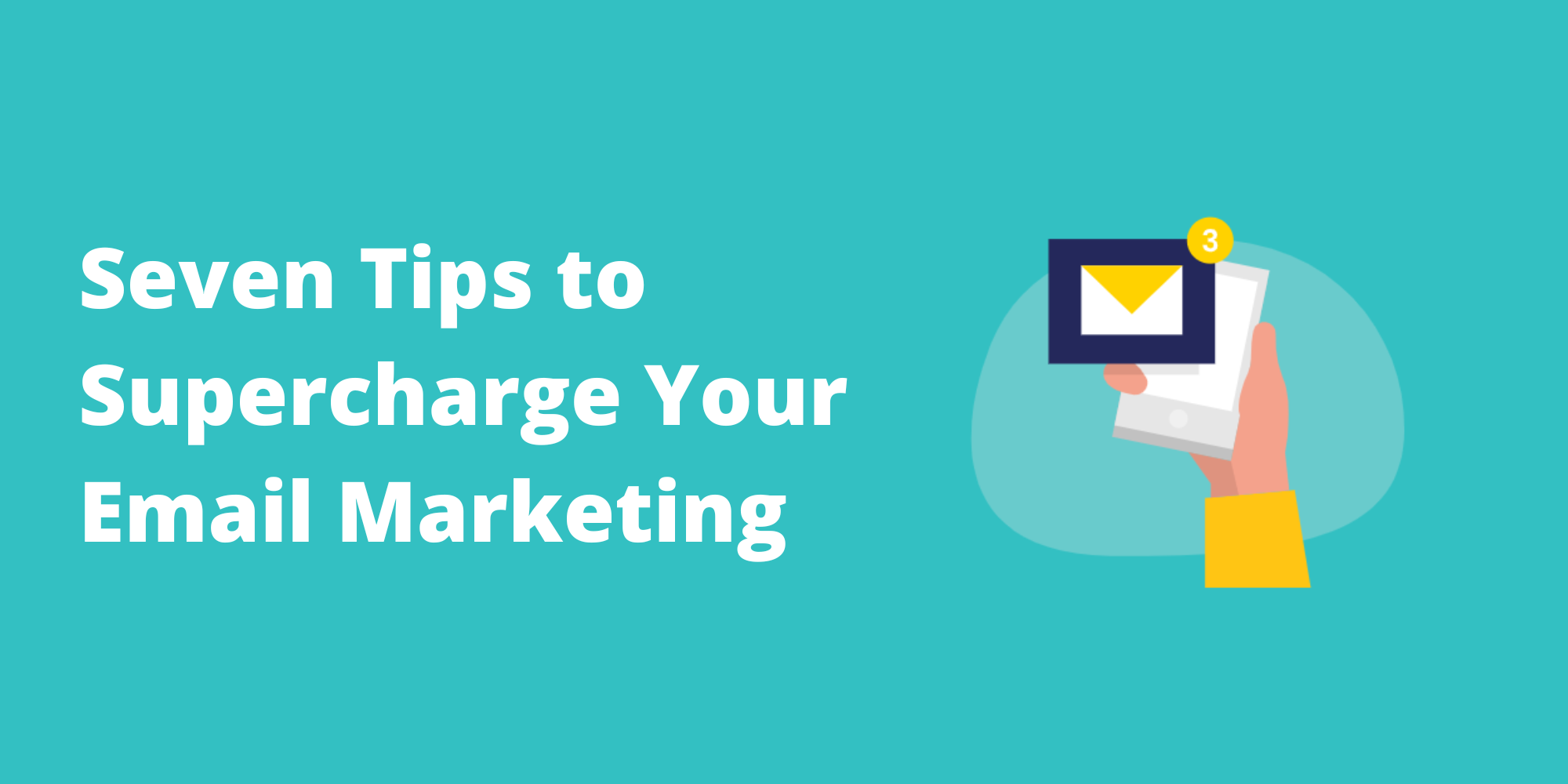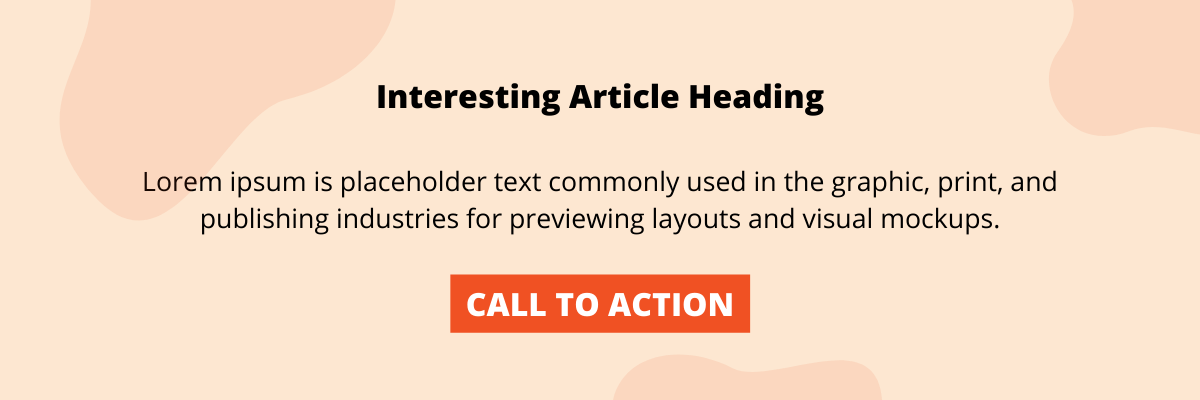7 Tips to Supercharge Your Email Marketing

7 Tips to Supercharge Your Email Marketing
You’ve probably heard that both businesses small and large are using email marketing to grow their revenue, reach new audiences, and better engage with their customers. But with all the hype, is email marketing worth it?
With more digital marketing options than ever before, including social media marketing and google ads, does email still hold its value when it comes to generating revenue?
We sat down with Nella DeCesare, from WBN Marketing, and discussed how you can supercharge your email marketing efforts and optimize the time you spend doing it. Listen to our full podcast episode below or continue reading to learn the 7 tips to supercharge your email marketing.
Tip #1: Personalize Your Emails
Email marketing is more than just sending out a few emails every month. It’s about creating a relationship with your customers and nurturing them every step of the way. A great way to do this is by personalizing your email campaigns. According to Salesforce, 84% of customers say being treated like a person, not a number, is very important to winning their business.
Include the recipient's name in the subject line or in the body of the email. You can also use data from their previous engagements, past purchases, or website activity to personalize emails based on their specific interests or preferences. For example, if your customers made a recent purchase, you could send them another email campaign based on products that complement their recent purchase.
Tip #2: Start Segmenting Your Email Lists
Segmenting your email lists allows you to send targeted messages that appeal to a specific segment of your customers, such as new subscribers or those who have purchased a certain product or service. This process will help you increase engagement and improve conversion rates, while also reducing the costs associated with sending non-targeted campaigns like unsubscribes.
An easy way to do this is by asking your subscribers relevant questions during sign-up forms and use this valuable information for future list segmentation. These questions can be as simple as asking for the date of their birthday, so you can send them a coupon a few days before.
With email segmentation, you have endless options for personalizing your email campaigns. Here are some options to help you get started with email segmentation:
- Past purchase history
- Website activity
- Location
- Gender
- Interests
- Stage of the sales funnel
- Engagement (did they click on something in the past?)
- Job title or industry
- Education level
- Family size
- Birthday or anniversary
Tip #3: Keep Your Email Lists Clean
To maintain a successful email marketing campaign, you're going to need to continually keep an eye out for bad subscribers and constantly remove individuals that don't open your emails.
We recommend every 6 to 12 months to analyze your email lists and think about removing the subscribers that haven't opened an email from you during that time. You can always include these subscribers in a win back campaign, and if you don't hear back from them, it's safe to say you can remove them from your lists.
One trick you can do to reduce the number of individuals who don't engage with your emails is to remind your subscribers to add your email address to their approved sender's list. This way, your emails will have a harder time being sent to their junk folder and won't miss out from being included in your future email campaigns.
There are several reasons for why you would want to review your email lists. The most important reason will allow you to maintain a healthy email deliverability score. A high bounce rate can negatively affect your email deliverability score and make it easier for your emails to end up in the spam folder of your existing and future subscribers.
Tip #4: Pay Attention to How Many Emails You Send
A question frequently asked by small businesses getting started is how often they should be sending email campaigns to their subscribers. Like most things in business, there isn't a simple answer, and it all seems to depend on your target audience.
The best advice we can give you on this test, test, and test again. Find out what works best for your subscribers and see how they engage or react to different campaigns. If you’ve got great content or regular promotions, consider sending emails two to three times a week, but be sure to monitor these email campaigns. The line between being helpful and annoying is a thin one.
Tip #5: Create Good Email Subject Lines
Billions of emails are sent every day, and unless you have an awesome email subject line your emails will never get opened, even by your most loyal customers. The easiest way to do this is by evaluating your email subject lines to see which ones resonate the most with your audience. Most email marketing platforms will allow you to automatically A/B test multiple subject lines before automatically choosing a winner (based on engagement) and send out the rest of your emails with the best subject line.
Another quick way to create good email subject lines is to keep them brief. According to a Mailchimp study, email subject lines with 50 characters or less have a 12% higher open rate, and a 75% higher click-through rates than other emails.
The last tip to creating good subject lines is to personalize your email subject lines as much as possible. Using your reader’s first name in the subject line of your email makes them feel valued. Out of the dozen emails you receive in your inbox daily, the ones that usually catch your eye are the ones that mention your first name in the subject line. The same goes for all your subscribers and customers.

Tip #6: Create Compelling Call-to-Actions
Email marketers have a lot of competition for their audience's attention — including from their own company's other channels. You need to create compelling content that will make people want to click and learn more.
Emails are a great medium to inspire action; and that’s where your own call-to-actions (CTAs) come in. Your emails should always include CTAs that encourage your subscribers to take action — whether that's signing up for a webinar or downloading an interesting e-book.
Your CTA button should short and concise, and should stand out from the rest of your email. The easiest way to do this is through color contrast. If you have a light email background, make your CTA button a darker color so it stands out more. This will make it easy for subscribers to engage with your content.
Tip #7: Optimize Your Emails for Mobile
Mobile continues to account for a greater share of email opens. In fact, according to the latest research from Litmus, nearly half of all email is opened on mobile devices. As we find ourselves regularly checking our email wherever we are, it's important to make sure our email campaigns are optimized for smaller screens.
One tip to optimize your email campaigns for mobile viewing is to pay attention to the pre-header text. This area is the first line of your email text that is a preview in your recipients inbox. It provides extra characters that you can use to pair with your subject line to incentivize your recipients to open or click on your email.
In the same way that we recommend you test your subject lines, you should also test pre-header text, and tailor it to different email lists and the devices your subscribers are using.
Conclusion
If a business wants to communicate with its customers, the best way to do it is through email. For ten years in a row, email marketing continues to generate the highest ROI for its marketers.
When you want to grow your business, acquire new customers, launch a new product, or offer a promotion, you turn to email. Why? Because email delivers better results than any other marketing channel.
If you'd like to learn more about how your business can optimize its email marketing campaigns check out our upcoming Digital Marketing Course on Email Marketing. We'll discuss the basics of email marketing, understand email deliverability, talk about best practices, and even explore the most popular email marketing services you can get started on.
